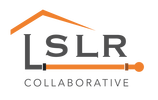What is the goal of the Lead Service Line Replacement Collaborative?The goal of the Lead Service Line Replacement Collaborative is to accelerate voluntary lead service line replacement in communities across the United States.
Who are its members?The current members of the Lead Service Line Replacement Collaborative are (*Steering Committee members):
|
Download a brochure with more information on the Collaborative:
Download an overview document about the Collaborative.
| ||||||||||||||||||||
Who convened the Collaborative, and how is it organized?
The LSLR Collaborative was convened by RESOLVE, an independent, non-profit organization that specializes in collaborative problem-solving. RESOLVE works closely with the LSLR Collaborative's steering committee to manage the overall process. Information and tools for communities are being compiled by work groups and will be reviewed and approved by the full membership.
What is the Collaborative working on?
The Lead Service Line Replacement Collaborative will provide information on best practices and model approaches, technical assistance and facilitation for pilot projects, and opportunities for shared learning for local collaborative initiatives by:
- Preparing information, tools and models for lead service line replacement, public engagement and collaboration, funding, and other topics useful for drinking water utilities, public health officials and community leaders;
- Providing information on lead service line replacement options that are achievable, cost-effective and safe for residents;
- Technical assistance and convening or facilitation assistance in forming local, collaborative initiatives (subject to available funding); and
- Capturing and sharing lessons learned in communities.
How is the Collaborative funded?
The Collaborative is currently supported by Spring Point Partners and by in-kind contributions from its members. Previous funders included the W.K. Kellogg Foundation and the Pisces Foundation.
What will guide the work of the Collaborative?
The work of the Lead Service Line Replacement Collaborative is grounded in the following principles:
- Removal of lead service lines in contact with drinking water provides an opportunity to significantly reduce the risk of exposure to lead in drinking water.
- LSL replacement initiatives must be designed to ensure residents are protected during and after the removal and that the work is done in a cost effective manner.
- LSL replacement initiatives should address barriers to participation so that consumers served by LSLs can benefit equitably, regardless of income, race or ethnicity.
- A collaborative, community-based approach, built on contributions from residents, health officers, utilities, community leaders, local elected officials, can help provide the strong foundation needed for successful action.
- Innovative models are needed to help communities find the tools, strategies and resources needed to replace LSLs based on the latest science and current best practices.
- By providing models for LSL replacement, it is possible to advance support for initiatives at all levels of government and in different types of communities.
- Successful LSL replacement initiatives will take careful planning and time.
- This effort is focused on mechanisms to support local action not on EPA’s efforts to revise the Lead and Copper Rule.
How can I get additional information?
Please contact members of the Steering Committee:
Mason Hines, RESOLVE, [email protected]
Steve Via, American Water Works Association, [email protected]
Kristie Trousdale, Children’s Environmental Health Network, [email protected]
Lynn Thorp, Clean Water Action, [email protected]
Roya Alkafaji, Environmental Defense Fund, [email protected]
Mason Hines, RESOLVE, [email protected]
Steve Via, American Water Works Association, [email protected]
Kristie Trousdale, Children’s Environmental Health Network, [email protected]
Lynn Thorp, Clean Water Action, [email protected]
Roya Alkafaji, Environmental Defense Fund, [email protected]
|
Lead service line replacement is complicated and practices may evolve with new information. The Collaborative will continually update its resources to reflect any changes. While all original material has been vetted through the Collaborative, references to external documents and websites do not constitute an endorsement by the Collaborative or any of its members. Please direct any comments on these tools and resources to feedback. |
|
The Lead Service Line Replacement Collaborative encourages ongoing feedback on how to improve these tools and resources. Please provide feedback. |



